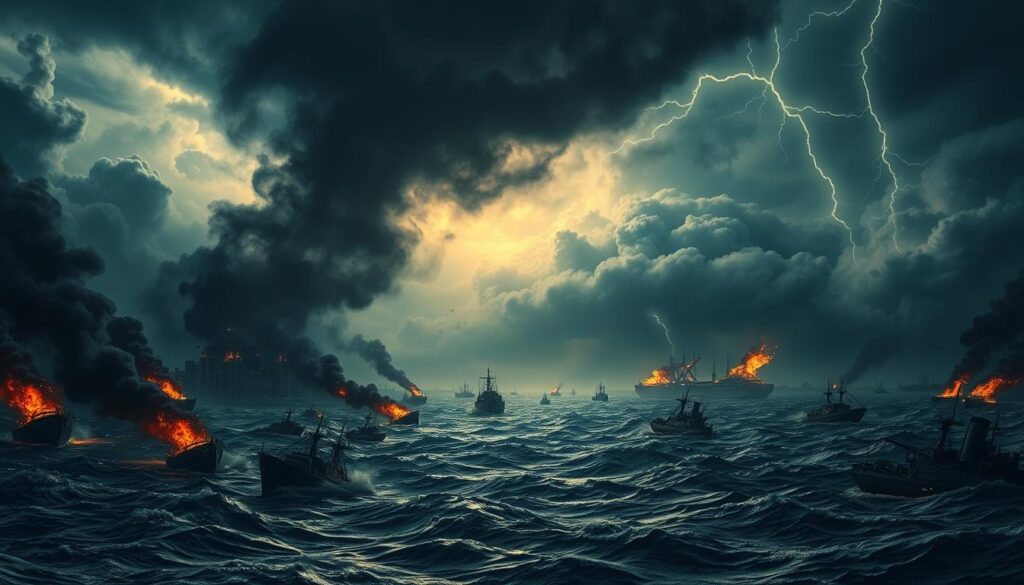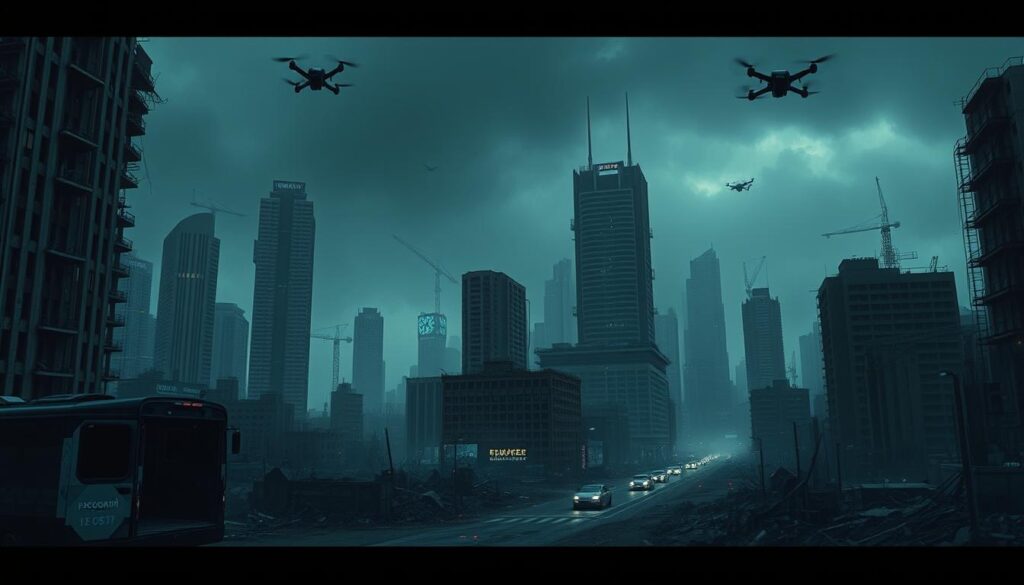Michel de Nostredame, known as Nostradamus, was a 16th-century French astrologer whose writings continue to captivate the world. His collection of quatrains, titled Les Prophéties, has sparked debates and interpretations for centuries. Many believe his cryptic verses hold clues to future events, from global conflicts to environmental shifts.
Recently, interest in his work has surged, particularly with the election of Pope Leo XIV and the focus on his 2025 and 2027 prophecies. Some even draw parallels between Nostradamus’ writings and Saint Malachy’s “Prophecy of the Popes,” adding another layer of intrigue.
What makes his quatrains so compelling is their ambiguity. They leave room for interpretation, allowing people to connect them to current geopolitical and environmental crises. Whether you’re a skeptic or a believer, there’s no denying the lasting impact of this legendary seer.
Key Takeaways
- Nostradamus was a 16th-century French astrologer known for his quatrains.
- His work, Les Prophéties, continues to intrigue modern audiences.
- Recent events have renewed interest in his writings.
- His predictions are often linked to global conflicts and environmental changes.
- The ambiguity of his quatrains allows for diverse interpretations.
Who Was Nostradamus and Why Do His Predictions Matter?
Michel de Nostredame, a 16th-century French astrologer, left a legacy that still intrigues the world. Born in 1503, he began his career as a physician before turning to astrology and prophecy. His most famous work, Les Prophéties, published in 1555, contains 942 cryptic quatrains that have been interpreted in countless ways.

The Life and Work of Michel de Nostredame
Michel de Nostredame’s journey from medicine to prophecy is fascinating. During the Renaissance, he gained fame for his ability to predict outbreaks of the plague. His shift to astrology led to the creation of Les Prophéties, a collection of poetic verses divided into “centuries.” These quatrains are known for their metaphorical and archaic language, making them challenging to decipher.
Many believe his writings foresaw significant events, such as Napoleon’s rise and the 9/11 attacks. However, critics argue that the vague symbolism allows for broad interpretations. Despite this, his work remains a cornerstone of esoteric knowledge.
The Enduring Fascination with Les Prophéties
The cultural impact of Les Prophéties is undeniable. Over the centuries, people have used it to predict wars, disasters, and even political shifts. Its poetic ambiguity invites readers to find personal meaning in the verses, ensuring its relevance across generations.
Today, there’s renewed interest in his work, especially with the election of Pope Leo XIV and the focus on his 2025 and 2027 prophecies. Whether you view him as a visionary or a product of his time, Michel de Nostredame’s legacy continues to captivate those who seek answers about the future.
Nostradamus Predictions: A Look at His Most Famous Quatrains
The cryptic verses of a 16th-century seer continue to spark curiosity and debate. His quatrains, written in archaic French, are filled with symbolic language that has been linked to major historical events. From wars to pandemics, his writings have been interpreted in countless ways.

Historical Events Linked to Nostradamus’ Prophecies
Many believe his verses foresaw significant moments in history. For example, one quatrain mentions “the great lion on the throne… old faith crumbles into dust,” which some link to papal prophecies. Others connect his writings to the rise of Hitler, the moon landing, and even the COVID-19 pandemic.
Translators often decode his archaic French and anagrams to uncover hidden meanings. This process has led to diverse interpretations, making his work a subject of fascination for centuries.
The Ambiguity and Interpretations of His Writings
The poetic nature of his quatrains leaves room for multiple interpretations. Scholars argue that this ambiguity allows for confirmation bias, where people see what they want in his verses. Despite skepticism, his writings remain a cornerstone of esoteric knowledge.
Modern interest has surged, especially with interpretations tied to the years 2025 and 2027. Whether viewed as a visionary or a product of his time, his legacy continues to captivate those seeking answers about the future.
The Prophecy of Pope Leo XIV and the End of the Catholic Church
The unexpected election of Pope Leo XIV in 2025 has reignited discussions about the future of the Catholic Church. As the first American pontiff, Cardinal Robert Prevost’s selection surprised many. His choice of the name “Leo” has sparked intense speculation, linking it to ancient prophecies.

Nostradamus’ Prediction of a Pope Named Leo
One of the most debated quatrains mentions a “lion on the throne.” Some interpret this as a reference to Pope Leo XIV. The lion symbolizes strength and leadership, qualities often associated with the papacy. This imagery has led many to believe that his reign will coincide with significant global upheaval.
The Connection to Saint Malachy’s Prophecy of the Popes
Saint Malachy, a 12th-century Irish bishop, created a list of 112 papal mottos. The final motto, “Peter the Roman,” is said to mark the end of the Catholic Church. Some theorists link this to Pope Leo XIV, suggesting his leadership could fulfill this ancient prophecy.
Speculations About the World Ending in 2027
Another theory ties the year 2027 to the Church’s collapse. This is based on a 442-year timeline starting from Pope Sixtus V’s reign. While these ideas remain speculative, they highlight the enduring fascination with prophetic interpretations.
- Cardinal Robert Prevost’s election as Pope Leo XIV surprised the world.
- The “lion” imagery in prophetic writings ties to papal strength and apocalyptic themes.
- Saint Malachy’s papal list suggests the Church’s end with “Peter the Roman.”
- Theories link 2027 to the Church’s collapse, citing historical timelines.
- Debates continue about the literal vs. symbolic fulfillment of these prophecies.
Global Conflict and Natural Disasters in Nostradamus’ 2025 Predictions
The 16th-century seer’s writings have long been linked to global upheavals, and his 2025 quatrains are no exception. Many interpret his cryptic verses as warnings of wars and natural disasters that could reshape the world. From geopolitical tensions to environmental crises, his words continue to spark debate and speculation.

The Prediction of “Cruel Wars” Across Continents
One of the most discussed quatrains mentions “cruel wars” spreading across continents. Some link this to the ongoing tensions between NATO and Russia, as well as unrest in the Middle East. The seer’s vague language allows for broad interpretations, but many see parallels in today’s geopolitical landscape.
For example, the Russia-Ukraine conflict has been cited as a potential fulfillment of this prophecy. The phrase “brothers divided by blood” has been interpreted as a reference to the shared history and current strife between the two nations. While these connections remain speculative, they highlight the enduring relevance of his writings.
Forecasts of Earthquakes, Volcanic Eruptions, and Other Disasters
Another set of quatrains describes “fire from the earth’s core” and “the ground shaking violently.” These verses are often linked to volcanic activity and earthquakes. Recent events, such as the eruptions of Indonesia’s Krakatoa and Iceland’s volcanoes, have fueled these interpretations.
Additionally, rising seismic activity in regions like the Pacific Ring of Fire has led some to believe that the seer’s warnings are coming true. Climate change has also amplified fears of floods and extreme weather events, which some connect to his descriptions of “water swallowing the land.”
| Event | Seer’s Description | Modern Interpretation |
|---|---|---|
| Geopolitical Conflict | “Cruel wars across continents” | Russia-Ukraine conflict, Middle Eastern unrest |
| Volcanic Eruptions | “Fire from the earth’s core” | Krakatoa, Iceland eruptions |
| Earthquakes | “The ground shaking violently” | Pacific Ring of Fire activity |
While the seer’s writings remain open to interpretation, they serve as a reminder of the fragility of life and the unpredictability of the world. Whether viewed as prophecy or poetry, his words continue to captivate those seeking answers about the future.
Economic Collapse and Technological Advancements in 2025
The year 2025 is shaping up to be a pivotal moment in history, with both economic and technological shifts on the horizon. Some interpretations of ancient writings suggest a global economic collapse, while others highlight the potential for groundbreaking technological advancements. These contrasting forecasts paint a complex picture of the future.

Warning of a Global Financial Crisis
One of the most debated topics is the possibility of a severe financial downturn. Predictions of nations facing bankruptcy and currency devaluation have led to comparisons with past crises, such as the 2008 housing market crash. Inflation trends and cryptocurrency volatility are often cited as modern signs of these warnings.
For example, the phrase “wealth crumbles like dust” has been interpreted as a reference to the instability of global markets. While these connections remain speculative, they highlight the ongoing challenges in maintaining economic stability.
Positive Predictions About Technological Progress
On the brighter side, there are also forecasts of significant technological breakthroughs. Vague references to “new inventions” improving quality of life have been linked to advancements in AI, renewable energy, and medical technologies. These innovations could counterbalance the darker economic forecasts.
For instance, the development of AI-driven solutions and sustainable energy sources has already begun to transform industries. These technological advancements offer hope for a brighter future, even in the face of potential economic turmoil.
“In times of crisis, innovation often thrives, offering solutions to the very problems that threaten us.”
| Prediction | Modern Interpretation |
|---|---|
| Global Economic Collapse | Inflation, cryptocurrency volatility, market instability |
| Technological Advancements | AI breakthroughs, renewable energy, medical innovations |
- Economic warnings connect to inflation and cryptocurrency trends.
- Technological optimism is fueled by AI and renewable energy breakthroughs.
- Debates continue about the specificity of these forecasts.
- Parallels are drawn between 2025 predictions and the 2008 financial crisis.
- Technological progress offers a counterbalance to economic fears.
As we approach 2025, the interplay between economic challenges and technological hope remains a topic of intense discussion. Whether these forecasts prove accurate or not, they serve as a reminder of the unpredictable nature of the years ahead.
Environmental Changes and the Threat of an Asteroid Impact
The future of our planet is often a topic of intense speculation, especially when ancient writings seem to hint at looming environmental changes. From rising sea levels to prolonged droughts, these warnings resonate with modern concerns about climate shifts and natural disasters. Some interpretations even suggest a cosmic threat, such as an asteroid impact, could play a role in shaping our future.

Predictions of Drastic Shifts in Weather Patterns
Historical texts describe “rising sea levels” and “prolonged droughts,” which align with today‘s climate challenges. For example, 2024’s record-breaking heatwaves and polar vortex events have been linked to these ancient warnings. The metaphor of “earth trembling” has also been interpreted as a reference to climate migration patterns, where people are forced to leave their homes due to extreme weather.
These interpretations highlight the fragility of our planet and the urgent need for action. While the connection between ancient writings and modern events remains speculative, they serve as a reminder of the potential consequences of unchecked environmental changes.
The Shocking Prophecy of an Asteroid Falling to Earth
Another startling prediction involves a “great fire” falling from the sky, which some interpret as an asteroid impact. NASA’s asteroid monitoring programs, such as the 2023 Psyche mission, aim to assess and mitigate these risks. Technologies like asteroid deflection are being developed to protect Earth from potential threats.
Comparisons have been drawn between these warnings and scientific risk assessments, such as the Apophis asteroid’s close approach in 2029. While the probability of a catastrophic impact is low, the fear of such an event continues to captivate the public imagination. This fascination with doomsday scenarios underscores the enduring power of ancient texts to spark debate and reflection.
| Prediction | Modern Interpretation |
|---|---|
| Rising Sea Levels | Climate change and coastal flooding |
| Prolonged Droughts | 2024 heatwaves and water scarcity |
| Asteroid Impact | NASA’s Psyche mission and Apophis 2029 |
Whether viewed as prophecy or poetry, these writings remind us of the unpredictability of our world. For more insights into how ancient wisdom intersects with modern science, explore this article.
Conclusion: The Legacy of Nostradamus’ Predictions
The enigmatic writings of a 16th-century seer continue to intrigue and inspire debates about the future. His prophecies, cloaked in ambiguity, allow for endless interpretation, ensuring their relevance across generations. This timeless appeal stems from humanity’s desire to find patterns in uncertainty, especially during times of crisis.
The Catholic Church remains cautious about eschatological prophecies, including those linked to Saint Malachy’s papal list. While some see these writings as warnings, others view them as symbolic reflections of societal fears. This duality invites both fascination and skepticism.
As we approach 2025 and 2027, the world watches closely to see if these events will reshape the seer’s legacy. Whether his words are seen as prophecy or poetry, they remind us of the enduring power of mysticism in shaping our understanding of the unknown.

